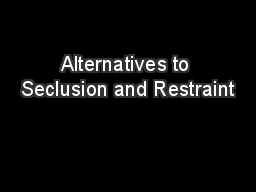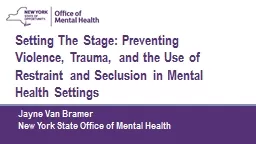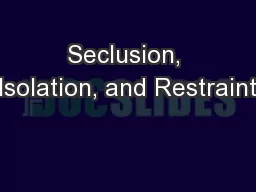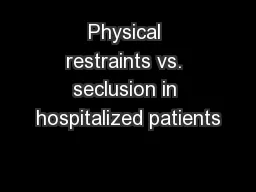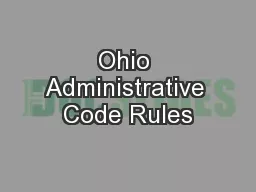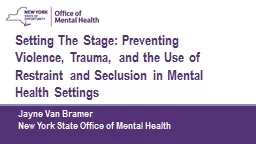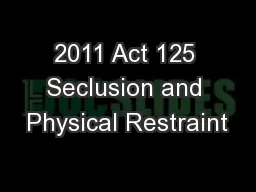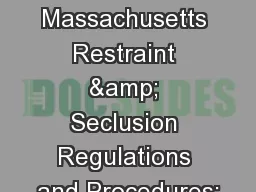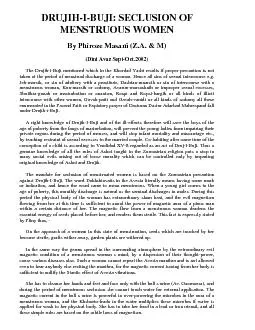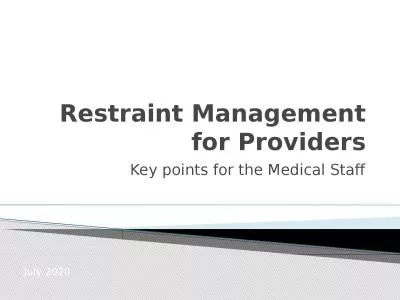PPT-Alternatives to Seclusion and Restraint
Author : tatiana-dople | Published Date : 2020-01-11
Alternatives to Seclusion and Restraint Karin Tochkov PhD amp Nichole Williams BS Seclusion locking a patient alone in a room that heshe cannot leave without assistance
Presentation Embed Code
Download Presentation
Download Presentation The PPT/PDF document "Alternatives to Seclusion and Restraint" is the property of its rightful owner. Permission is granted to download and print the materials on this website for personal, non-commercial use only, and to display it on your personal computer provided you do not modify the materials and that you retain all copyright notices contained in the materials. By downloading content from our website, you accept the terms of this agreement.
Alternatives to Seclusion and Restraint: Transcript
Download Rules Of Document
"Alternatives to Seclusion and Restraint"The content belongs to its owner. You may download and print it for personal use, without modification, and keep all copyright notices. By downloading, you agree to these terms.
Related Documents

